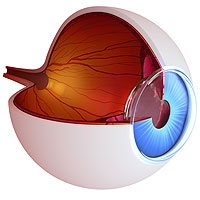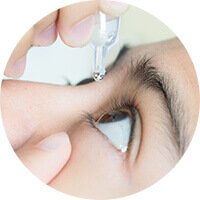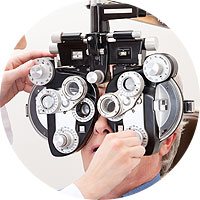The Blepharitis Study
A clinical research study for adults with Blepharitis.
A clinical research study is currently evaluating an investigational product for its safety and potential effectiveness in the treatment of blepharitis that is not adequately managed with over-the-counter medicines or lid scrubs.
You may qualify if you are:
- 1 year of age or older
- Diagnosed with blepharitis
- Currently experiencing redness, swelling, debris, and irritation in at least one eyelid
- Not pregnant or planning to become pregnant throughout the duration of this study
- Willing to not wear eye make-up during the two-week study period
- Willing to not use artificial tears during the two-week study period
Study staff will determine eligibility based on additional study criteria.
You do not have to pay for the study drug, study visits, tests and procedures that have to be done for the study. You or your insurance company will have to pay for routine medical care not associated with the study you would receive whether or not you are in the study.
Register to learn more about this study:
If you are interested in participating in this research study, please email Patti Myers to see if you may be eligible. By contacting our practice, you are in no way obligated to participate in the study.
Patti Myers:
research@icarespecialists.com
(570) 714-5910
All information provided will be kept confidential in accordance with our Privacy Policy.
About Blepharitis
What is Blepharitis?
Blepharitis is a common – yet chronic and incurable – eye condition that affects hundreds of thousands of people in the US each year. Blepharitis usually involves the part of the eyelid where eyelashes grow. It’s common for the eyelid to become red, swollen, irritated and itchy. People also experience eyelid debris, blurry vision and sometimes the loss of eyelashes. Blepharitis has many causes including bacterial infection, clogged oil glands in your eyelids, as well as allergies.
Current treatments of blepharitis include antibiotics, warm compresses, eye drops, and eyelid scrubs. However, many people aren’t getting adequate results with current treatments and continue to suffer.
There are other options. This study is evaluating an investigational product that may alleviate Blepharitis symptoms
Information on Clinical Research Studies:
What is a Research Study?
In a clinical trial, participants receive specific interventions according to the research plan or protocol created by the investigators. These interventions may be medical products, such as drugs or devices; procedures; or changes to participants’ behavior, such as diet. Clinical trials may compare a new medical approach to a standard one that is already available, to a placebo that contains no active ingredients, or to no intervention. Some clinical trials compare interventions that are already available to each other. When a new product or approach is being studied, it is not usually known whether it will be helpful, harmful, or no different than available alternatives (including no intervention). The investigators try to determine the safety and efficacy of the intervention by measuring certain outcomes in the participants. For example, investigators may give a drug or treatment to participants who have high blood pressure to see whether their blood pressure decreases.
*This information was taken directly from and can be found at www.clinicaltrials.gov.
About the Study:
The Blepharitis Study
Participation in this study lasts approximately 5 weeks and will require 5 office visits to complete, which will typically take about 1 hour.
The investigational study drug (eye drop) will be compared to a placebo which looks like the active study drug but without the active medicine. Study participants will not know which treatment option they are receiving.
This product is administered by instilling one drop of the study drug on the fingertip and smearing it onto the closed eyelid along the eyelash line. You, or a caregiver, will be instructed to apply the study drug twice a day for 14 days.
If you qualify for and choose to participate in the study, you will be randomly assigned, by chance, to receive either the active study drug (67% chance) or the placebo (33% chance). The study drug needs to be taken for 2 weeks (14 days) during the research study period.
The study drug dosing instructions will be explained to you. You will be given a dosing diary and instructed on how to record your study drug doses during the study. You will also be required to use a non-prescription eyelid scrub.
You do not have to pay for study drug, study visits, tests and procedures that have to be done for the study. You or your insurance company will have to pay for routine medical care you would receive whether or not you are in the study.

















